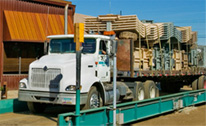Where Does Scrap Metal Go?

Have you ever wondered what happens to decommissioned trains or ships, once they are released from service? Think about it for a minute. Where does scrap metal go? You can’t very well unload one of those in the municipal dump and just walk away! These ginormous machines could end up where most discarded metal objects go: the scrap metal recycling yard . Admittedly, enormous metal items like ships require their own specialized firms and yards, as do trains. Believe it or not though, people like us keep most metals from filling yards to capacity, once it’s processed and sold, it is gone, just to start over again.
Scrap Metal Processing
Scrap metal buyers are the smaller collectors of our material world. They may obtain scrap metal by offering to get rid of junk – as a service to the homeowner, for instance. Smaller scrap metal buyers will take their scrap to a scrapyard. A scrapyard buys and sells metal objects by weight, while a wrecking yard may sell functional items, like car parts, according to their utility. So, some scrap metal is picked out and reused for other projects. Larger items, like trains, are dismantled by other companies.
While some pre-smelter sorting may occur, processing plants generally shred all recycled materials together and then separate the tiny metal pieces via shifting or magnetic techniques. Small amounts of rubber, wood and plastic may still be mixed in with the metal at this point.
Finally, the nearly pure scrap metal shreds are melted in extremely high-temperature furnaces. This process liquefies the metal and burns off any lingering impurities. Once it is pure, the liquid metal can be molded into new products.
The Scrap Metal Industry fulfills many services, such as:
Keeping scrap materials from entering landfills. Scrap metal buyers divert 145 million tons from landfills.
Reducing the need for natural resources. It takes much more energy to extract new resources than it does to reclaim them from scrap metal. The EPA has found that using scrap metal provides a 75 percent savings in energy over using virgin iron ore.
Boosting the economy. Scrap metal recycling represented $65 billion of the 2006 American economy. That same year, scrap metal buyers sold $15.7 billion of scrap overseas, which helped offset the trade deficit.

